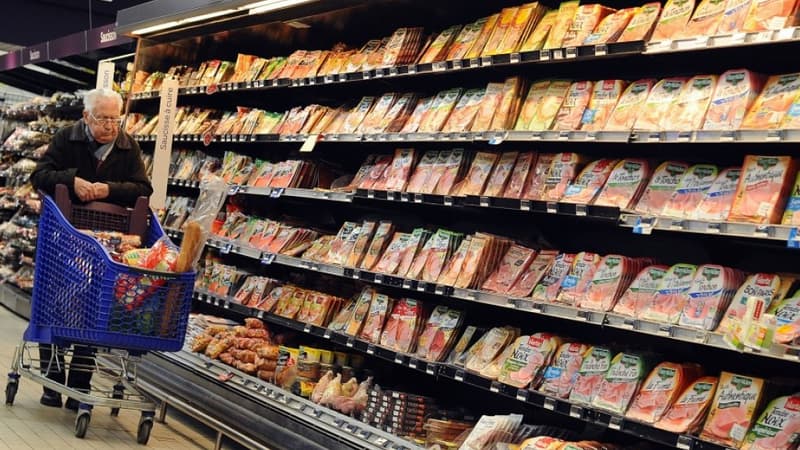Long considered by the government, the anti-inflation basket will not see the light of day. Considered too complex to implement, this device that involved blocking the prices of certain products risked “violating the rules of competition”, had estimated the head of System U, Dominique Schelcher.
Instead, the executive and distributors agreed to a new operation to help consumers cope with rising prices: the “anti-inflationary quarter,” to be launched on Wednesday.
• What is the “anti-inflationary quarter”?
During a press conference with the leaders of the big retailers in early March, Bruno Le Maire described the “anti-inflationary quarter” as a “massive, effective and protective device” against rising prices on the shelves.
Specifically, the distributors undertake through this operation to sell certain everyday products at the “lowest possible” prices. At the same time, the Government promises to deploy a “food check” for the most modest households in the coming months.
• What brands?
Carrefour, Intermarché, Système U, Casino… Most of the leaders of large retailers were present in Bercy at the beginning of March to confirm the participation of their establishments in the “anti-inflation quarter”. One of them, however, was conspicuous by his absence: Michel-Edouard Leclerc.
In CNews, the president of the strategic committee of the Leclerc centers deplored the political communication around the anti-inflationary neighborhood. “I am not going to go up to the photo to say that Leclerc is sold for less,” he said.
“We are getting it right with the operations at cost price. We cut the prices of the masks, the self-tests, the wand… These are communication operations that feed customer confidence in the fact that we are cheaper in a broader panel of articles”, Michel -Edouard Leclerc had detailed more on BFMTV, believing that he did not “need” an operation like that of the “anti-inflationary neighborhood”.
• What products are affected?
The “anti-inflationary quarter” should have daily products as a priority. But each brand remains free to select the items in question and the prices applied. They may even vary from region to region.
In addition, most of the business will involve private-label products, where brands have more “latitude” to set prices, Carrefour Chief Executive Alexandre Bompard said. These products will be identifiable by a tricolor “anti-inflation room” logo.
It should be noted that, without waiting for a government project, Système U had been the first brand since the beginning of February to launch its anti-inflation basket of “150 products at cost prices” for an “indefinite period”, contenting itself with the minimum margin provided by the law for these items.
In the process, Carrefour, Intermarché and Monoprix had followed suit. Carrefour, for example, announced that it would also launch its “anti-inflation basket” in mid-March. made up of 200 products sold at an average of two euros and “at a block price” until mid-June. These are 100 “everyday” products and another 100 labeled “healthy” with Nutri-Score A and B, marketed under the Carrefour and Simpl brands.
For its part, Intermarché announced the launch of a campaign on “500 anti-inflationary products”, for 470 of them own-brand items and for 30, “fresh products from traditional departments – meat, fish, fruit or vegetables”.
• Even when?
The “anti-inflationary” quarter should last exactly 100 days. During this period, the General Directorate for Competition, Consumption and Fraud Repression (DGCCRF) will carry out controls to “guarantee that it is indeed in the margins of the distributors where the lowest possible prices are made,” said Bruno Le Maire.
Indeed, the device will be financed thanks to the margins of the distributors, it will cost them “several hundred million euros” and the Government, the Minister of Economy specified.
Then, in June, trade negotiations between manufacturers and distributors will be reopened “so that the drop in wholesale prices, which we are seeing in the markets but which has not yet been transmitted to everyday consumer products, translates” into products for use. daily.
Source: BFM TV


